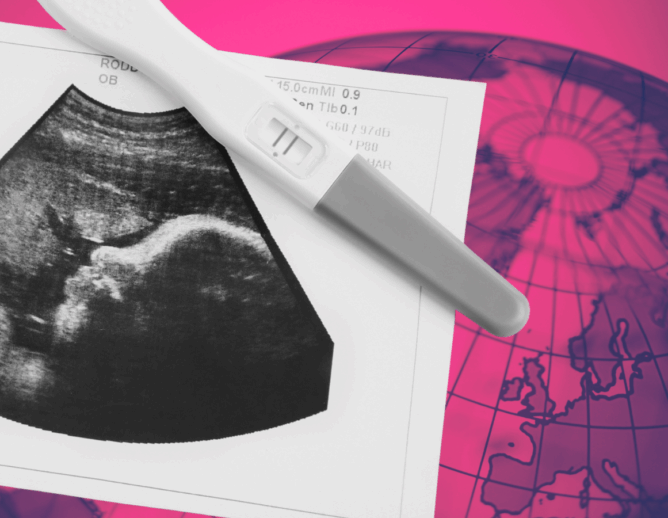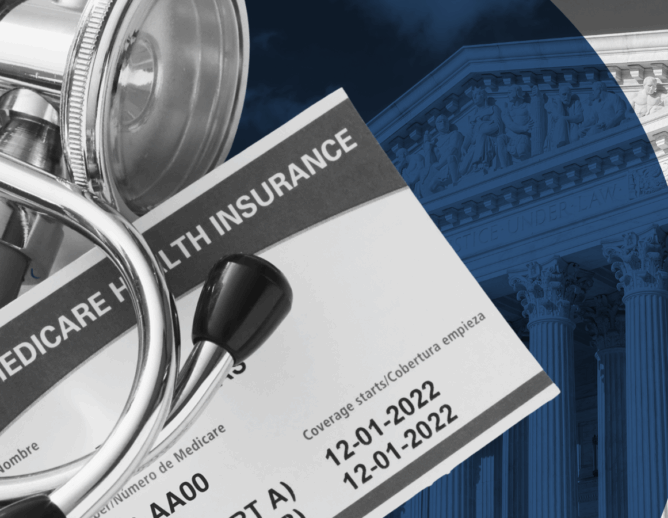This Expert Column is part of a two-part series that examines how abortion is regulated compared to other health services in the United States and globally. The following piece will examine how other countries have pushed back against abortion exceptionalism by treating it as health care, aligning their abortion laws and policies with recommendations from the WHO and various human rights bodies.
Today marks International Safe Abortion Day, the global day of action to demand access to safe and legal abortion care everywhere and for all women, girls, and gender-diverse individuals.
This September 28, we reflect on the increasing prevalence of “abortion exceptionalism” in the United States — particularly its rise post-Dobbs v. Jackson Women’s Health Organization — and what it means for access to abortion care. This phenomenon refers to legislatures, regulatory bodies, and courts subjecting abortion to uniquely burdensome rules, deeming it special, different, or wrongful. These rules are medically unnecessary and make essential health services more difficult to access, resulting in devastating effects on health, well-being, and human rights.
Even when Roe v. Wade protected the federal right to abortion, abortion was subject to much more stringent regulations than other health procedures with similar risk profiles. Since 2022, the United States has seen a surge in abortion exceptionalism, with the Dobbs decision emboldening courts, legislatures, and the Trump administration to further criminalize and restrict access to abortion care. The differential treatment of abortion falls in various categories, including abortion procedures and medications, health professionals and institutions, pregnant people’s decision-making, and funding and insurance coverage for abortion.
Procedures and Medications
Procedures and medications used to terminate a pregnancy have historically been subjected to onerous regulations in the United States — many of which have been proven to be medically unnecessary. Since its approval by the Food and Drug Administration in 2000, mifepristone has been regulated “with a strictness out of proportion to its risks.” The Risk Evaluation Mitigation Strategy for mifepristone, in particular, has imposed restrictions on the drug’s distribution that are unlike those imposed on other drugs with similar or higher-risk profiles.
Since Dobbs, anti-abortion advocates have sought to impose even more burdensome restrictions on medications used to terminate pregnancies. In 2024, Louisiana enacted a law to classify mifepristone and misoprostol as Schedule IV controlled substances. Other states, including Texas, Missouri, and Kentucky, have introduced similar legislation. Schedule IV classifications are typically reserved for drugs with potential for abuse, such as Xanax and Valium, imposing higher standards regarding how the medications are stored and ordered and how prescriptions are documented. Classifying mifepristone and misoprostol as Schedule IV controlled substances will have significant implications on health outcomes by impeding patient access, delaying care, affecting privacy, and imposing logistical burdens on health care systems.
TRAP Laws
The “targeted regulation of abortion providers,” or TRAP laws, impose additional and burdensome requirements on abortion facilities and providers that go beyond what is imposed on other health care services and are required to ensure patient safety. For example, some TRAP laws require abortion clinics to meet standards comparable to those of surgical centers or require abortion providers to have admitting privileges at a hospital within a certain distance.
Existing TRAP laws continue to undermine access to abortion care in states that now have broad abortion bans, making such care more challenging to provide to patients seeking abortion under narrow exceptions. They are also prevalent in states where abortion remains legal. Some TRAP laws, moreover, are becoming more stringent in the wake of the Dobbs decision. For example, while numerous states have long subjected abortion to unusually extensive reporting mandates, some states have adopted harsher requirements in recent years. States, including New Hampshire and Michigan, have considered bills that require abortion reporting to include additional and unnecessary details about the patient (i.e., age and residence) and the procedure (i.e., where, when, and how it was performed). In Indiana, the attorney general and governor have sought to make “terminated pregnancy reports” public, despite the fact that they constitute medical records that are not subject to public record laws.
Decision-Making
While all medical decision-making must comply with informed consent requirements, some state abortion laws impose further barriers, such as requiring abortion seekers to participate in mandatory or biased counseling, comply with waiting periods, and undergo medically unnecessary ultrasounds. Other laws require third parties (e.g., parents) to be involved in abortion decision-making or permit third-party influence over an abortion seeker’s decision to access care. Regarding speech and information-sharing related to abortion, for example, courts have simultaneously upheld requirements that abortion counseling include medically-inaccurate information regarding potential risks and complications, while striking down requirements that crisis pregnancy centers provide accurate information about the availability of abortion services at other facilities.
Young people’s abortion decision-making has long been subjected to heightened restrictions, especially when compared with decision-making involving other sexual and reproductive health services. Pre-Dobbs, most states (38 states) required parental involvement in a pregnant minor’s abortion decision — the vast majority of which did not require parental involvement in a pregnant minor’s decision to access prenatal care, STI services, or contraception. In the current post-Dobbs landscape, states like Florida are seeking to foreclose the already challenging pathways to care (i.e., judicial bypass) for young people who do not wish or are unable to involve their parents in their abortion decision.
Funding
Few, if any, health services in the United States have been subject to the same financing restrictions imposed on abortion. At the federal level, the Hyde Amendment has banned the use of federal funds for abortion since 1976, except under extremely narrow exceptions. The Hyde Amendment greatly limits federal funding for abortion through Medicaid, largely affecting coverage of abortion for low-income individuals. Most states have a similar policy, with only 17 states allowing the use of state funds to pay for abortions under Medicaid. Additionally, 10 states prohibit private insurance policies sold within the state from covering abortion, and 25 states prohibit ACA Marketplace plans from covering abortion. In states with these restrictions, patients with applicable plans must pay for abortion services out-of-pocket (or through an alternative source of funding).
More recently, anti-abortion advocates have successfully targeted federal funding that supports the provision of wide-ranging health services in facilities that also provide abortion care. In April, the Trump administration announced that it would temporarily withhold Title X funding (which covers family planning services for low-income individuals) from 16 grantees — the majority of which were Planned Parenthood centers. In June, in Medina v. Planned Parenthood, the Supreme Court allowed South Carolina to withhold Medicaid funds from any health clinic that also provides abortion; since the ruling, other states have been working to enact similar restrictions. A provision in the 2025-2026 budget reconciliation legislation (“One Big Beautiful Bill”) would essentially apply Medina’s holding to the entire country by cutting off Medicaid payments for a year to non-profit health clinics that provide abortion.
These efforts do not directly affect funding for abortion care, as federal funds are already prohibited from covering most abortions. However, the indirect effects on abortion care are vast, as health facilities that rely on federal funding could be forced to close or refrain from providing abortion care. In turn, patients could be forced to travel further for abortion care, on top of reduced access to other essential reproductive health services like contraception, STI care, and cancer screenings.
As providers and patients seeking abortions grapple with the repercussions of Dobbs, the rise in abortion exceptionalism continues to undermine the goal of providing safe and legal access to abortion care everywhere, with the most severe effects disproportionately burdening those already facing high barriers to health care.
DISCLAIMER: The views and opinions expressed in this piece are those of the authors and do not reflect the views of the O’Neill Institute.



